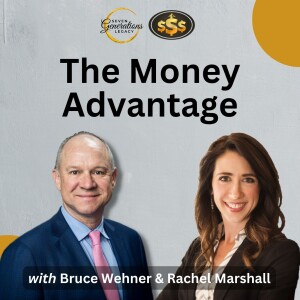
Why Do Banks Own Cash Value Life Insurance? BOLI
 2023-01-16
2023-01-16
Download
Right click and do "save link as"
Why do top banks own billions of dollars of cash-value life insurance, if Dave Ramsey and Suze Orman say it's such a bad idea? Today, we're looking into bank financials at a little-known, highly desirable asset banks use as a Tier 1 Capital Asset to increase their financial strength. We're talking about bank-owned life insurance, or BOLI.
https://www.youtube.com/watch?v=7gqAiiHQLXI
So, if you want to fortify your finances and increase your stability through economic turbulence ... tune in now to find out about becoming your own banker with the Infinite Banking Concept!
Table of contentsWhat is BOLI?What About COLI?Tier 1 CapitalHow Much Life Insurance Do Banks Own?What Can We Learn From BOLI?Resources for Learning About BOLIBook A Strategy Call
What is BOLI?
BOLI stands for Bank Owned Life Insurance, and while it’s widely available knowledge, it’s not widely understood. So why would banks want to own life insurance, and what does it do for those institutions?
Banks really didn’t own life insurance until about 1994. In large part, banks take life insurance policies out on their key employees. This doesn’t just give the banks an additional place to store and grow capital securely. The death benefit also provides the banks with a means to train a replacement in the event of that employee’s death. In fact, even the cash value is useful in allowing the banks to prepare for a key employee to retire. This is how banks have “insurable interest” in their employees.
But banks don’t just take out these policies on their employees, either. Banks have actually started group policies on the bank's customers who have loans with the bank. This means that if a customer died, the death benefit would pay for any outstanding loans.
Banks are great at protecting their money. They see the value in having their money over-collateralized in order to protect it.
[12:15] “If that is something that this institution is doing, why shouldn’t you be doing it in your own life?”
What About COLI?
Like bank-owned life insurance, there is also corporate-owned life insurance or COLI. The idea and usage of this type life insurance is the same. Companies benefit from having growth and liquidity in a life insurance policy, as well as the death benefit. Corporations like Walmart, Disney, Procter & Gamble, and many more rely on life insurance strategies.
So if life insurance is such a “bad investment” as some financial talking heads would suggest, then why are banks and major corporations relying so heavily on life insurance in their financial strategies? Clearly, there must be some merit to it.
Tier 1 Capital
[14:37] “Banks have to have what’s called tier 1 capital… and up to 25 percent of their tier 1 capital, which has to be safe capital… is saved in the cash values of permanent life insurance. And that then is used to also insure the employees of the bank.”
Tier 1 capital is the core of a bank’s capital that is held in reserves. It is also used to fund some of the bank’s business. This kind of capital must be safe and liquid. In fact, regulators require that banks have a certain amount of tier 1 capital available. This determines the strength of a bank, and that capital is useful for funding any losses the bank might have.
In other words, tier 1 capital, like bank-owned life insurance, is directly related to the strength and stability of a bank. So if banks are using such a large portion of life insurance to provide a foundation for their institution, that same logic can apply on an individual level. It’s capital that is safe, liquid, and has growth that’s not correlated to the stock market, after all.
How Much Life Insurance Do Banks Own?
It might surprise you to know just how much life insurance banks have in their financial portfolios. The following are some statistics and numbers from some of the major banks. The numbers below represent how much cash value the banks have from their life ins...
view more
More Episodes
8 Keys to Success, with Ruchi Koval
 2022-12-12
2022-12-12
 2022-12-12
2022-12-12
The Bible and Money, with Rabbi Daniel Lapin
 2022-11-14
2022-11-14
 2022-11-14
2022-11-14
Infinite Banking in Canada
 2022-10-17
2022-10-17
 2022-10-17
2022-10-17
Tour Our Private Family Banking System
 2022-10-10
2022-10-10
 2022-10-10
2022-10-10
What is the Life Insurance Death Benefit?
 2022-08-15
2022-08-15
 2022-08-15
2022-08-15
012345678910111213141516171819
Create your
podcast in
minutes
- Full-featured podcast site
- Unlimited storage and bandwidth
- Comprehensive podcast stats
- Distribute to Apple Podcasts, Spotify, and more
- Make money with your podcast
It is Free
- Privacy Policy
- Cookie Policy
- Terms of Use
- Consent Preferences
- Copyright © 2015-2024 Podbean.com




